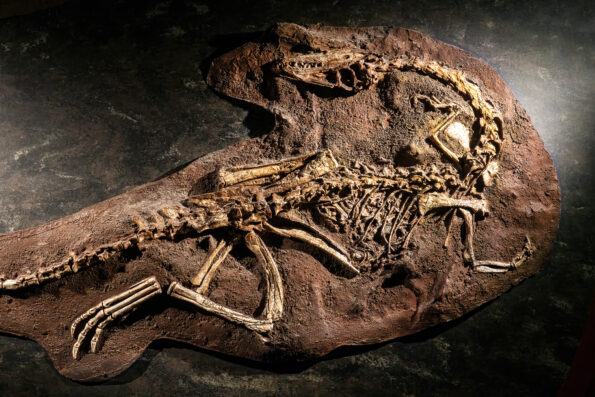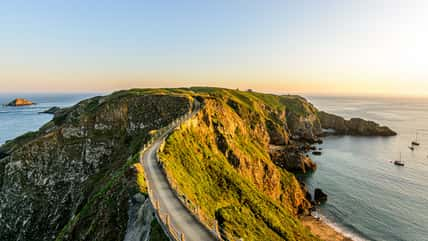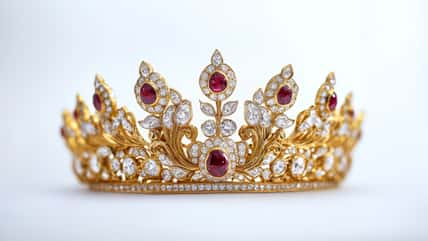She Was A Paleontologist Who Made Remarkable Discoveries, Even When Her Male Peers Attempted To Discredit Her

Were you taught about paleontologist Mary Anning in your science or history classes growing up? I wasn’t, but I’m thankful to have come across her story now, especially since she was a woman who made remarkable discoveries, even when her peers tried to discredit her.
Mary Anning was born in 1799 in Lyme Regis, England. Lyme Regis is a seaside town famous for its geology and fossils and is now a part of what’s called the ‘Jurassic Coast.’
Mary’s love for paleontology came from her father, Richard. Richard was a cabinetmaker and carpenter but would make additional money by mining for fossils near their town and selling his discoveries.
As a little girl, Mary would join her father in looking for fossils, and he taught her everything he knew about finding, cleaning, and selling them.
Mary and her siblings didn’t receive much of a traditional education, but she knew how to read and would study geology and anatomy independently. As she got older, she would go on more fossil-finding outings with her father and older brother, Joesph.
When Richard died in 1810, Mary and the rest of her family dedicated most of their time to finding and selling fossils to support themselves. They often discovered things like ammonites, belemnites, and vertebrae.
It’s important to note that Mary and her family did this work before major science texts like Darwin’s The Origin of Species were published. Everything they collected and sold was bits and pieces of crucial scientific history and findings.
In 1817, Lieut. Col. Thomas Birch became one of Annings’ most prominent supporters and bought several of their findings to help support them.
Further down the line, he auctioned off his collection and donated the earnings to Mary’s family.

wittayayut – stock.adobe.com – illustrative purposes only
In 1811, when Mary was only 12-years-old, she and Joseph made a miraculous find. Joesph found the skull of what would later be known as an Ichthyosaurus while Mary worked at digging it up or excavating it.
It took her several months to dig out the remainder of the skeleton. It was purchased, sold among collectors, and eventually displayed in London.
Over a decade later, in 1824, she made a solo discovery that she’s still well known for today. Mary found the first full, intact skeleton of a Plesiosaurus, otherwise known as a marine reptile.
The fossil was in such amazing condition that people became skeptical if the discovery was real.
In fact, Georges Cuvier, the famous French zoologist, publicly disputed her findings which almost risked her reputation.
After much back and forth, Georges finally realized his mistake when another paleontologist showed him drawings of the Plesiosaurus skeleton.
Once he gave Mary credit, she and her family received the respect they deserved from the scientific community.
Throughout her career as a paleontologist, she made fascinating discoveries, digging up fossil after fossil that would teach the world more about the living beings that were on Earth before us.
In 1828, Mary discovered one of the world’s most recognized prehistoric creatures, which we’ve often seen portrayed in iconic science-fiction films like Jurassic Park – the pterosaur, otherwise known as the pterodactyl! The one she found was the first to be discovered outside Germany.
Like many women who lived centuries before us, she wasn’t always properly credited for her work. For instance, she had become so well-known in science that she started bringing other established scientists with her on fossil-hunting trips. But a number of them didn’t credit her for the work they did with her.
As she got older, Mary received some payments from the British Association for the Advancement of Science and the Geological Society of London for her findings.
However, she never became a wealthy woman, despite everything she did. She died of breast cancer at the age of 47 in 1847.
Although Mary should’ve been recognized more while alive, she should still be celebrated today. So if you ever find yourself in London, you can look at the fossils she found in their Natural History Museum and marvel at the wonderful things she contributed to science.
If true crime defines your free time, this is for you: join Chip Chick’s True Crime Tribe
Sign up for Chip Chick’s newsletter and get stories like this delivered to your inbox.
More About:Chicks We Love





